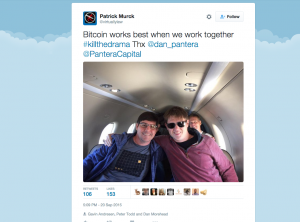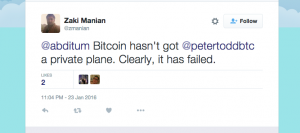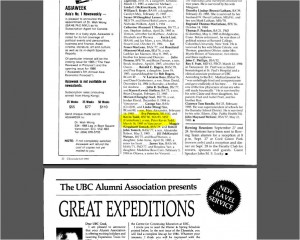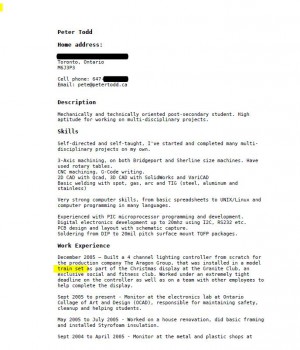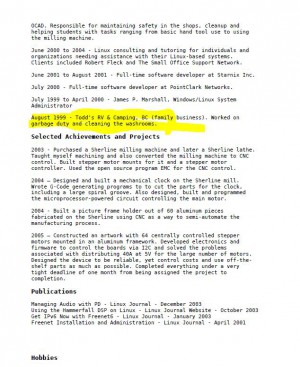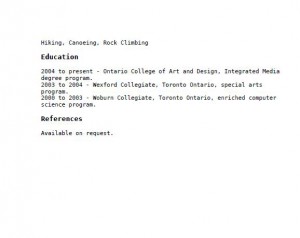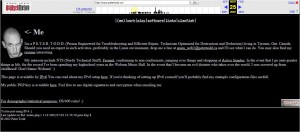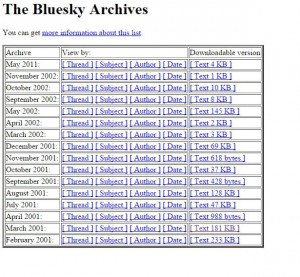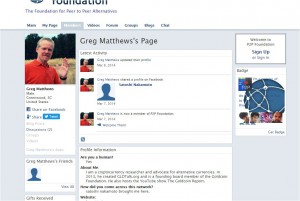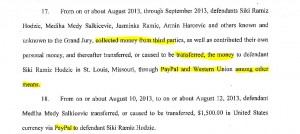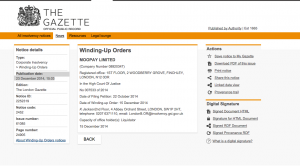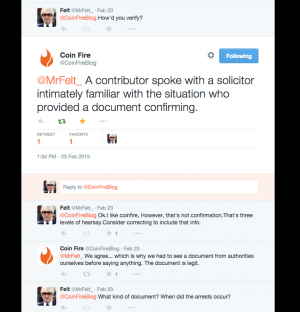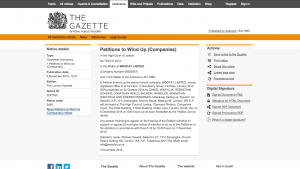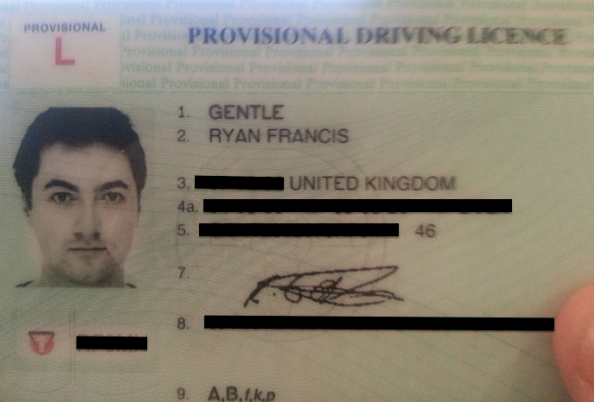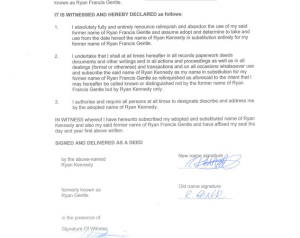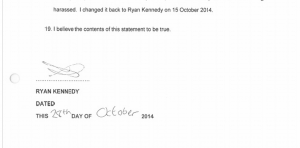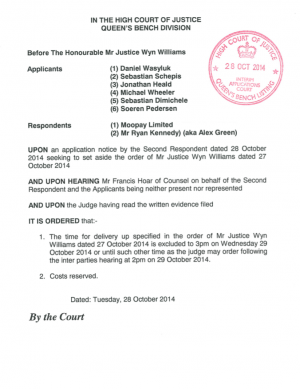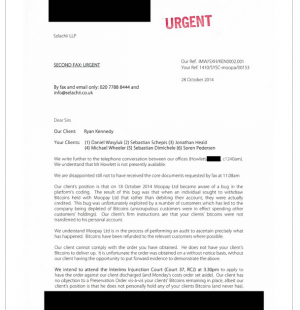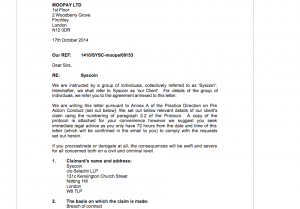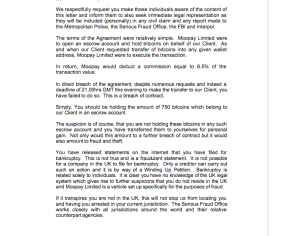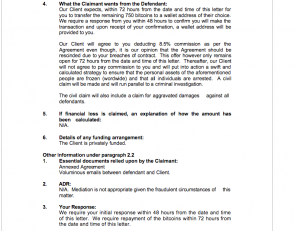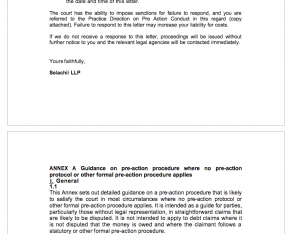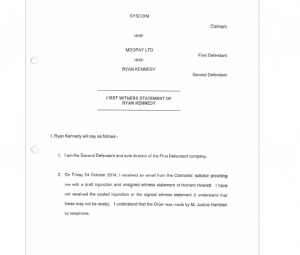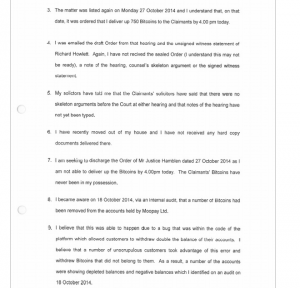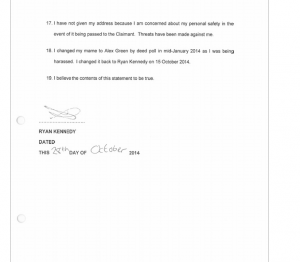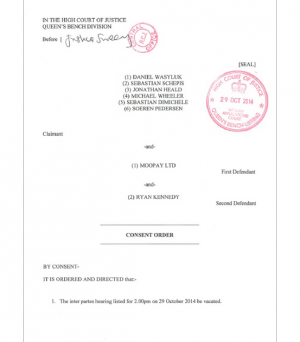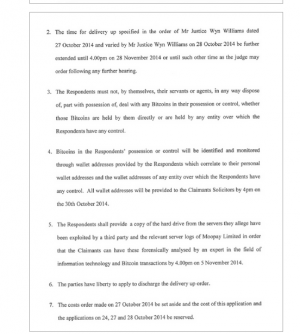TLDR: The evidence presented in this series is good enough to support the argument that PeterTodd is Satoshi, but the degree of that support is uncertain. There are a number of unusual factors introduced here or taken from prior publications that likely can be explained only by this simple theory. The last three pictures, a MircoStory if you will, possibly tell the story that Peter Todd may or may not be allowed to communicate himself. This article may have located the hacker of Satoshi’s P2P Foundation account.
This is Part 3 of a series of posts in which I present some open source material that suggests Peter Todd is Satoshi Nakamoto or one of several persons (including family) who created Bitcoin under a shared pseudoniem. To get caught up, review the following links, some of which are newly presented here:
- Part 1
- Part 2
- https://www.reddit.com/r/btc/comments/422sf8/part2_in_2001_peter_todd_and_hal_finney_were/cz7jggy (hmmmmm)
- https://twitter.com/petertoddbtc/status/690445054599675904 (see retweets + likes)
- https://twitter.com/adam3us/status/690618860622376960 (see retweets + likes)
- https://twitter.com/octal/status/675660004926488577 (see also here)
New
- https://twitter.com/Beautyon_/status/606164988806500352 (see also RBF Drama)
- https://twitter.com/petertoddbtc/status/462514905661202432
- http://research.ocadu.ca/mobilelab/project/portage
- http://research.ocadu.ca/mobilelab/project/portage-cell-phone-xylophone
- http://www.mobilemedia.uni-siegen.de/
* * *
So far, I’ve presented publicly available information as evidence that can be used to make the case that Peter Todd is Satoshi Nakamoto or part of a group operating under that name. In Parts 1 and 2, I explicitly stated that the evidence presented in this series of posts is circumstantial and that one should not “bet the farm on this argument being true.” I am reiterating that disclaimer again here. While the evidence is at best indirect, it lends itself to a few easy to digest inferences that round out the theory that Peter Todd is Satoshi Nakamoto.
I want to use this post to summarize the evidence presented so far and to explain how I came to the conclusion that Peter Todd is Satoshi. Before I do that, I’ll explain my perspective, method and Motive for these posts.
* * *
First Suspicions – Blocksize Debate Gets Serious
I have suspected Peter Todd as a possible Satoshi since late Spring 2015/early Summer 2015. I was not confident enough to post anything about until recently, and I still have a handful of other Satoshi prospects (some of which are among the usual suspects and some that are totally unheard of), but Peter Todd (PT) strikes me as the best guess among all of them moment.
In the Spring of 2015, Gavin Andresen (“Gavin”) began a series of posts designed to get people talking about the blocksize limit and its role in scaling the protocol. Around then, and even before, I started noticing PT and Gavin publicly colliding on the forums and in social media. See also [1], [2], [3]. For example, PT publicly supported reviewing whether Gavin should continue to have commit access on GitHub and keep his title of Chief Scientist with the Bitcoin Foundation. At the time, I could not understand the hostility from PT, especially since it was directed toward the person who others say Satoshi entrusted the network with before he disappeared.
Until I started uncovering a few rocks and kicking a few tires, I did not know much about PT (I still don’t), but I was very aware of his presence in the community. I had noticed how well his professional opinion seems to be respected and sought after by industry participants. [4] It makes sense: he writes code, presents at conferences, attracts a fair amount of attention by industry media outlets, visits with regulators (see also here), and gets carted around in private jets.
However, being an expert developer was not and is not a good enough reason alone to explain why PT is more popular than any other expert developers given some of the public displays or why anyone should care whether he sells his bitcoins. I am not alone – It is not unusual to see forum posts or Reddit threads inquiring about Mr. Todd’s origins and/or relevance in the community. Once I started to notice a trend, I began following his Twitter account and read through his post history at Bitcointalk closely. In August on 2015, I saw this post by Jackson Palmer and took another look. I found lots of unique folks with connections to the Paypal Mafia and Canada. I kept finding that a person named Ryan Lackey, who along with Peter Todd, routinely appeared as a connection in almost every social media background I looked at – their work seems to share some similarities (compare Sealand/HavenCo. with Project Portage). In reality, Lackey might be Satoshi (and possibly a stronger candidate now) or part of a crew constituting Satoshi (perhaps with the usual suspects, like Back, Finney, possibly Szabo and Dai (Dai’s tone in writings is more like Satoshi’s than either Back, Finney, or Szabo). What follows is how I’ve connected some dots to date. This is a working draft and will be updated and edited as necessary.
* * *
Methodology
I have been a Bitcoin enthusiast since 2013. I read all the main forums, mailing lists, IRC channels, etc. I follow Bitcoin news outlets as well as the mainstream media. I am very aware of the most pressing issues of the day that impact the bitcoin ecosystem. This blog and my various social media accounts (twitter, bitcointalk, etc.) demonstrate my curiosity about and interest in Bitcoin and cryptocurrency generally. I mention this background only to be clear about my presence in the community and that I’m not a professional journalist.
That being said, it is important to highlight methodology so that other researchers can retrace my steps and build on the work presented here.
First, I have a legal background and therefore my approach will be as if I were preparing to present legal argument to a jury in a civil case. That presentation will present a theory supported with evidence. The evidence here is mostly circumstantial and has varying degrees of directness and indirectness (I assume direct evidence typically produces a settlement, confession or admission well before trial). Admittedly, I have no great way to authenticate evidence.
Second, the burden of proof for this article is best stated as a question: based on the information presented, is the claim that PT is Satoshi (or group) more likely to be true than not true (i.e., preponderance of evidence)?
Third, and to reiterate, this article has limitations and weaknesses. I am not a journalist and do not have the benefit of time or funding to research this matter. Therefore, the claims in the article are likely not as developed or supported as they might be in court or by investigative journalists at Newsweek or The New Yorker (not sure about Wired and Gizmodo). Likewise, this article is not scientific (you’ll find not attempts at anything like an linguistic analysis here).
I have conducted no interviews, hacked no accounts, or participated with others in the search for Satoshi. The evidence presented was “collected [solely] from publicly available sources.” I’m not a spook, cowboy, agent, officer, or anything like that, but I’d probably be o.k. at it. Cf. http://pastebin.com/4BcycXUu (word search “intelligence”).
Without question, this article does not prove the identity of Satoshi conclusively, but it does contribute to that the current body of research about him. It is worth noting that the PGP keys others will require before believing any claims about Satoshi’s identity are not conclusive either due to the possibility of hacking, lying, social engineering, etc. Therefore, unless there is a witness with direct knowledge of Satoshi’s identity or an admission, nobody will be able to present anything more than a theory built on circumstantial evidence.
Fourth, despite the short-comings, this article does have the benefit of being able to build on prior works and to connect a number of variables in new ways. Additionally, its written by someone that actively watches and participates in various crypto-currency communities.
Fifth the process used simply focused on connecting dots by searching for as many unique variable combinations as possible and working reverse chronological order on any interest possibilities. Like with the Moolah research on this site (Trail of Doges 1 & 2), I used a combination of both genealogical and archaeological research. I also limited the scope of many searches to the period between Jan 2000 and Dec 2008.
Sixth, I used several standards to evaluate whether PT is a better Satoshi than any other. The standards I used to evaluate candidates include some broad parameters and the use of what is known as the “eye test” in college sports. It clearly has limitations and is subject to bias.
For this investigation, for any person to be considered Satoshi, they must:
- Possess certain technical knowledge relevant to writing the Bitcoin protocol.
- The candidate should demonstrate some time commitment/experience with working on the types of problems solved by Bitcoin.
- The candidate’s background must explain certain factors unique to Satoshi such as the use of English (more on varieties of English later), knowledge of economics and programming.
Factors that are helpful, but not required, include:
- Use of both British and American English writing conventions. Not required since writing styles can be faked, modified and automated; likewise dialects can be practiced and pre-programmed.
- Expert-level Knowledge of Cryptography.
- Knowledge of and a relationship with the usual suspects such as Szabo, Finney, Back, Dai, etc.
- Is already a known Satoshi candidate.
- Tone in writings and overall disposition.
- PGP Keys, etc. – As stated previously, this/these would be conclusive only if a person whose identify has been verified is witnessed signing with private keys. Further, it is my understanding Satoshi rarely used them.
* * *
Theory of the Case
Based on the evidence presented, Peter Todd is probably Satoshi or worked with one more people acting pseudonymously as Satoshi.
1. How Many Peters am I Holding Up?
In response to Part 2, PT stated he was born on March 14, 1985. I can’t say that “Peter Todd” strikes me as an uncommon name, and having the date alone by PT’s own admission is not necessarily sufficient for identifying a particular PT. His facebook account suggests that his middle name starts with a K. In confirming his email exchanges with Hal Finney and Adam Back, PT implies that he has studied electronic money for a long time, in part, by synthesizing what he learned from Finney and Back with the economic principals garnered from his father who is a professional economist.
Several statements by PT can be cross-checked against public records. First, Peter Todd’s birthday does seem to be March 14, 1985. I was able cross-check the Reddit post with a birth announcement contained in the University of British Columbia Alumni magazine from 1985 (page 22).
You’ll notice that PT’s parents’ names are Eve and Kevin (I have not been able find middle names for either – in particular Kevin.). You will also notice that PT’s middle name is “Kevin” and that he was born in Vancouver, British Columbia on March 14, 1985 as represented on Reddit. I am reasonably confident this is Bitcoin’s PT and his family as the parent’s names cross-check against an obituary for PT’s paternal grandmother.
Peachland is an important geographical point to note as Todd’s resume references working for at least one summer at a family business in Peachland known as Todd’s Tent Town, which is the former name of the business his uncle Graham now manages.
Peachland is located in the Okanagan Valley, which has historical gold rush roots – don’t be surprised if that name contribued to naming Satoshi (e.g., a cryptoquip or anagram, etc).
From his resume, it appears PT has an interest in model trains and can build them too – he purchased a Sherline lathe and was once hired to build a model train Christmas display for The Aragon Group (a gambling-related business). You’ll recall that Dorian Nakamoto liked model trains and could build them as well . Dorian does not live far from the Sherline factory, fwiw. Dorian also liked steam engines from Pennsylvania, probably even the Leviathan #63 as it was a precursor to the #68 that he built (located in New Freedom, PA). Cf. https://en.wikipedia.org/wiki/Jupiter_(locomotive). Interestingly enough, Dorian is a brand of tool used in the model-train world.
I’ve mentioned PT’s dad, Kevin (KT). He’s an economist that likely specializes in natural resources and is or was at the top of the Northwest Territories’ economic policy and analysis department.

He also maintains a connection with folks looking to immigrate from China. Compare with PT’s knowledge and connections. (there are many examples)
 Aside from being a fan of Japanese food, he must also be a rail road fan to want to visit Virginia City, NV – practically an abandoned gold mining town that would have been connected to northern California and in which the #63 would have passed through on the Central Pacific Railroad.
Aside from being a fan of Japanese food, he must also be a rail road fan to want to visit Virginia City, NV – practically an abandoned gold mining town that would have been connected to northern California and in which the #63 would have passed through on the Central Pacific Railroad.
The Central Pacific Railroad (CPR) was the U.S.’s first transcontinental railroad. From northern California, British Columbia (and the Canadian Pacific Railroad (also CPR)) would have been linked by rail. The Canadian Pacific Rail Road was Canada’s first transcontinental railroad and is known, in part, for its “Silk Trains” which made a priority of transporting raw imported silk from China between the 1890s and 1933 (the monetary of incentive of silk trains referenced in this article obviously should not be overlooked). [note: CPRs vs DPR . . .[1] [2] – bit of a stretch, but still ]
I will save the Atlas Shrugged discussion for later.
- https://twitter.com/Leviathan63 – see also:
- https://twitter.com/_Leviathn (also Johnny Dilley) Cf. John Dillion
- https://twitter.com/railboss/following (Note: GoldCoin and spelling of “Petersen”)
Are your wheels spinning yet? It is about to get weirder.
I mentioned who I think Peter Todd’s dad is most likely given a few parameters. I say “likely” because I do not really know with out more. . . and because – what if Kevin Todd is really Peter Kevin Todd, Sr., etc.? For example, I found another Canadian named Peter Kevin Todd (PKT), who sometimes goes by Peter and sometimes by Kevin, who is an expat living in Spain and used to live in Alberta province (Canada).
PKT has a degree in economics from Newcastle (U.K.) and has been self-employed working in e-commerce from home since January 2009 (wink). He’s older – almost 70 – and is involved in the electronic cigarette business specifically. Now, I can’t explain this person’s identity. Not much of anything is easily findable about PKT on the internet other than social media (links below). He’s currently trying to freelance as a proofreader and claims to have well versed in both UK and North American-style english.
I did find evidence of a recent adverse tax action in the UK for a Nicholas Peter Todd, who is from the exact same area of Spain as PKT, related to smuggling tobacco into Canada and the UK (not quite e-cigs, but still . . . and, yes, the ages are off too). Most, but not all, of the pictures of PKT seem to be very far off from depicting either PT or KT, but they could be pictures of somebody else, modified, published for the purposes of disinformation (I think could be the case), etc.. However, perhaps Satoshi loves speedos (and John Galt).
- www.linkedin.com/in/peter-todd-9a4b3849
- https://www.facebook.com/PeterKevinTodd
- https://twitter.com/PKTodd (check out who he follows, this account predates PT’s by a year or more, IIRC)
- http://www.wayn.com/profiles/Peter7698
- https://www.elance.com/s/pktodd/resume/
- http://www.expatforum.com/expats/spain-expat-forum-expats-living-spain/38803-importing-car-into-spain.html
- http://pktodd24.wix.com/vapingeurope#!about/c2414
It is unclear how relevant or how much weight should be given to the PKT material given the likeness differences in the pictures. Pictures discrepancies extend to PT himself (and since there are many possible explanations). We know how PT looks today, but I can’t say he looks close to what he looked like in the early 2000s:
PT looks more like a strategy guy from Blockstream
Note how similar that name is to John Dillion and recall Jackson Palmer’s post. Note the plane peter was flying in the pic above (Hint: start with the person sitting behind PT in the plane picture).
2. Abilities; Buddies
As stated in Part 2, Peter Todd has both the capability and experience to have created Bitcoin.
He was writing on mailing lists (freenet-dev, cryptography, piclist) with Finney, Back, and Dei since at least 2000 with some frequency. For example, Feb 2000: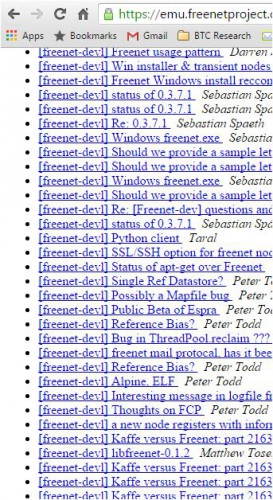 He was invited to join the Blue Sky list by Hal Finney, which is what I linked to previously in Part 2.
He was invited to join the Blue Sky list by Hal Finney, which is what I linked to previously in Part 2.
As mentioned above and in Part 1, PT has experience developing software based on clocks, time-stamping, and ledgers. He wrote about electronic money years before Bitcoin. Project Portage is very interesting, especially in comparison with Sealand.
PT appears to be a serious model train fan, hello Dorian. See also Here.
3. PT has acted like an expert in charge since his very first post on Bitcointalk.
Mr. Todd’s first substantive post on Bitcointalk was on Dec 10, 210 responding to a post made by Sastoshi in a thread titled “Fees in BitDNS confusion.” The thread is about giving users the ability to control the amount of fees that go into a transaction. Around this time, transaction fees were hot discussion in the bitcoin world and this thread was a variation on that theme vis-a-via the BitDNS. At that time Bitcoin 0.3.18 had just been released a few days prior and Bitcoin 0.3.19 (introducing some new DoS controls) was released with his final post. From this first post, PT has been an authoritative figure in Bitcoin directly deliberating with the most senior developers.
Unlike what others have said about Satoshi’s limitations, I think he was well aware of a certain type of transaction reversibility but was unable to say anything before a fix was in sight. I think PT is now racing to fix certain gaps he perceives as more urgent before transaction volume really takes off, even if that means publicly double-spending against Coinbase.
4. Unique Interests
As of 2000, PT had written game software to model trading and resource extraction scenarios from a corporate raider’s standpoint (compare with Finney’s background):
He knows about nuclear power. In essence, PT sets his own agenda. His positions tend to be unique and not aligned perfectly with any particular group. For example, in the blocksize debate, he has never said hard-forking should not be done ever or that blocksize limit should not change. In fact, he has suggested, IIRC, the blocksize limit could be increased or decreased.
5. Strange Micros – “Satoshi Nakamoto Brought Me Here”
As you know, Satoshi’s P2P Foundation account was hacked. This was not known until September 2014. On March 6, 2014 Newsweek published their dox on Dorian, model trains and all.
Looking through the P2P Foundation page, note:
- Satoshi understood economics, including resource extraction. Read his Bitcoin announcement and his subsequent comments here – he’s clearly an economist.
- Shortly after the Newsweek article, a person who goes by the name MicroGuy gets befriended by Satoshi. Weird. At times, he claims to be family (SDR).
Just last week, before I had resumed and completed my research, I saw this:
Most likely a coincidence, but you never know. Clearly, I’m not the only person who thinks PT may be Satoshi. Based on the preceding picture, the founder of Bitcoin’s replacement, GoldCoin, would agree with me (See also @Railboss ). Why, though? This and This? Or, how about this from September 6, 2014, which is interesting when you consider that just two days later on September 8, 2014 these posts appeared on Satoshi’s P2P Foundation Wall:(Moolah and Mintpal fireworks were about start around this too, as if things couldn’t get any weirder (Refresher + Moolah Resources + Posts)):
* * *
Concluding Thoughts
So far, I’ve covered a lot of circumstantial evidence. The value my approach adds is that it puts together a story that is not so random and out of the blue (but possibly BlueSky or BlueIraq – pun intended) as others. For instance:
- It explains odd factors like trains. It shows PT was involved with primary Satoshi candidates (before PT was one).
- It links PT, Satoshi, Blockstream and the Blocksize debate.
- It presents part of the background of a previously understood authority figure in the bitcoin community.
- It eliminates any legend-like backstory (other than clearly being gifted, and known to be since an early age).
- Its shows motive for what appears to be arrogant or difficult behavior (who would let their project be changed permission without a fight) and his need to put RBF in place.
If I am correct about PT’s involvement as, with, or part of Satoshi, then their are some unique conclusions and questions that follow
- PT is possibly very connected. Including to governments – perhaps he has knowledge about the Silkroad case (either as an agent or an adversary to governments). Perhaps PT being pressured by a hacker and can’t talk.*
- If KT is involved, then there is definitely a government connection (but who knows which side).
- If there is government connection to PT, either as an agent or through a relationship, then its not a stretch to wonder if Blockstream has one.
- It explains, in part, PT’s knowledge about and connections to China and potential Chinese contacts.
- It presents a possible understanding of an end goal for Bitcoin’s use cases – see Sealand/HavenCo.
- GoldCoin? Why is Satoshi making friends on P2P in March 2014?
- Truth is indeed stranger than fiction.
I’ll leave it to the jury to decide.
*I think its possible the Newsweek article could have tipped off an adversary about Satoshi’s interest in trains. I could easily imagine someone trying to retrace Goodman’s footsteps RE: model trains in hopes of finding Satoshi (PT), who may have known Dorian from train forums (or maybe Dorian is Satoshi or part of a Satoshi group – and what is with that brand of Dorian tools (weird!)). From there, but also separately, the adversary could have been waiting for Silk Road information from the Courts to further triangulate Satoshi’s identity. Many people probably think that DPR must have crossed paths with Satoshi. Once the DOJ made DPR’s records available, it was only a matter of time until Satoshi was located.
—————-
UPDATE FROM BITCOINTALK THREAD
Did some more kicking of the tires on the model train issue.
Look who started this sub-reddit: https://www.reddit.com/r/Ogrr/
He owns this domain too: https://who.is/domain-history/ogrr.com
Kraken was down yesterday (interesting timing). Didn’t they just acquire two Canadian exchanges? Oh, a CloudFlare issue you say, see here:http://blog.cloudflare.com/cloudflare-acquires-cryptoseal/ AND here: http://techcrunch.com/2013/01/14/cryptoseal-offers-vpn-as-a-service-for-all-that-secure-data-you-risk-when-using-the-coffee-house-wi-fi/ (recognize the name from Part 3?).
Here’s a thread about ogrr.com: https://bitcointalk.org/index.php?action=profile;u=35541;sa=showPosts;start=0 (and:https://twitter.com/colindean/status/251124303758766081)
And, guess what OGRR stands for? O-gauge railroading. Here’s a reference to the OGRR.com here: http://cs.trains.com/mrr/f/88/p/238617/2662366.aspx#2662366. In that thread, you’ll find another user referencing the #63 (Leviathan) making a trip to Toronto and also some other cryptic talk all over that forum, especially by a guy w/ the name JD – kinda like the JD referenced in Part 3, except here his name is JOHNNY DEGGESTY. He even started talking about bitcoin after the Newsweek article came out. He seems wise. http://cs.trains.com/members/deggesty/default.aspx
See also (just for kicks):
http://cs.trains.com/ctt/f/95/p/103655/1206441.aspx
http://ogrforum.ogaugerr.com/
In searching for train forums, i found this one random site that goes by the handle “BTC” – http://www.beyondthecrater.com
Its about a civil war battle between the rebels and the union (There is at least one post about a rebel alliance on Bitcointalk). Note the name of the home page – The Siege of Petersburg Online.
The site is owned by a guy named Brett Schulte – https://domain-records-lookup.com/whois/beyondthecrater.com
http://www.brettschulte.net (Not sure if same guy: https://twitter.com/brettschulte) –> http://www.aboutus.com/BrettSchulte.net –> BraveNet.com –>
http://www.acceptingbitcoin.bravesites.com/
http://pumpdog8.bravejournal.com/entry/148290
https://twitter.com/BraveTheWorld –> possible connection to Fraser Institute? Not sure but the name and underly ideology is the similar to FreeTheWorld.com – a Fraser-owned site. BraveTheWorld and Fraser both have locations in Toronto, where Satoshi (PT) lives.
Have no idea where this trail goes. There are many parallels to Atlas Shrugged, which is cool – its one my of my all-time favorites.
—Additional Update —
- Page 11 https://cryptome.org/2013/11/bitcoin-pirate-nakamoto.pdf
- “NASCAR” http://www.lionel.com/about
- “Moolah” http://motherboard.vice.com/blog/talladega-shibe-dogecoin-is-headed-to-nascar
- Nice dogecoin shirt: https://twitter.com/voyagerdoge/status/588723205633941505
- http://www.iamsatoshi.com/free-market-and-free-people/
- http://www.iamsatoshi.com/blockchain-politics-peter-todd/

